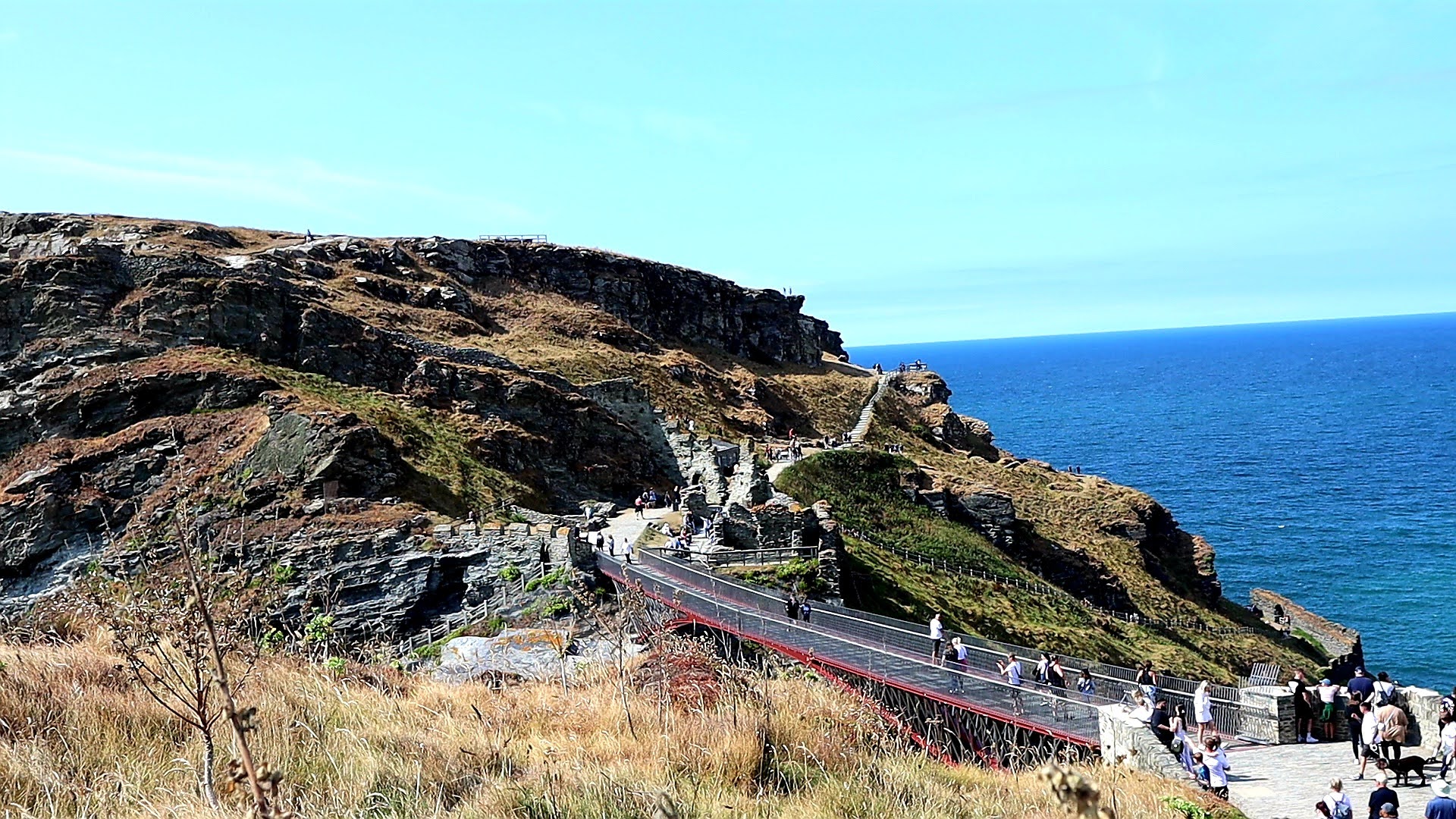Tintagel Castle in Cornwall is a 13th century medieval fortress with a history that dates back much further and is immersed with the legends of King Arthur. The castle is built half over the mainland and half over a jagged headland bulging out into the Cornish sea. During the high middle ages (13th century) Richard, 1st Earl of Cornwall built the current castle which later fell into disrepair and ruin.
| Built | 11th Century |
| Type | Medieval Castle |
| Condition | Ruins |
| Ownership | English Heritage |
| Access | Public – Fee |
Thriving Medieval Settlement
The site where Tintagel Castle stands has a long history dating back at least 1500 years. A number of artefacts dating to the Roman-British period (43-410 AD)have been uncovered at the site, however no structures from this period have been discovered. Archeologists have uncovered over 100 building remains that date back to between the fifth and seventh centuries which indicate the site seems to have been a high-status fortified village or citadel in the early middle ages. Large quantities of imported pottery have also been uncovered from the era suggesting that Tintagel may have also been a port with links to the Mediterranean Sea. It was during this era that the 40 metre long Great Ditch was dug on the mainland to defend the entrance to the natural land bridge. However, during the 8th century Tintagel fell out of use; this could possibly be linked to the fall of the kingdom of Dumnonia at the beginning of the eighth century.
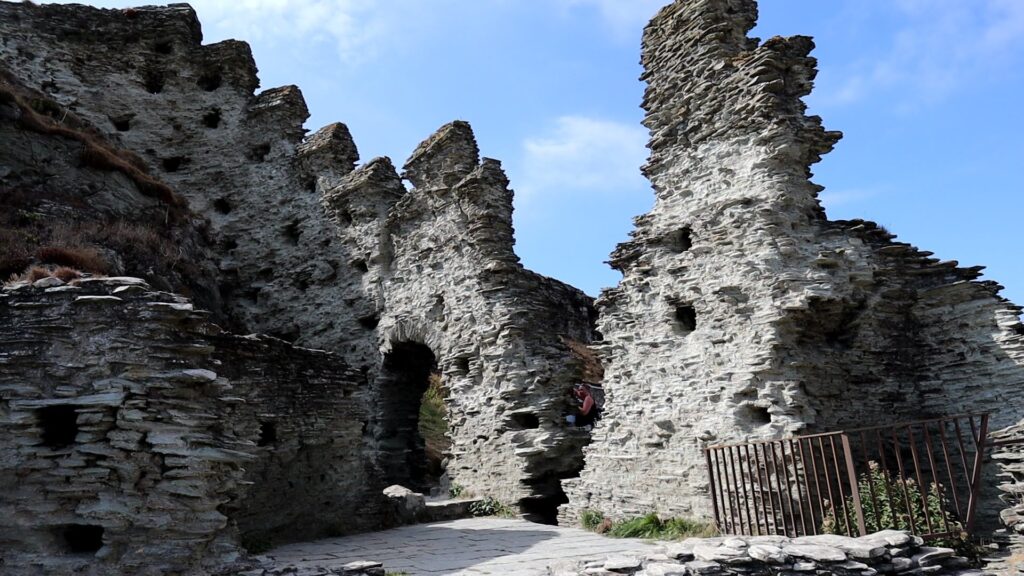
King Arthur
Tintagel is closely linked to the legend of King Arthur. It was Geoffrey of Monmouth in the twelfth century who first linked King Arthur to Tintagel when he wrote his History of the Kings of Britain.
In Geoffrey’s tale, Tintagel was the seat of Gorlois, Duke of Cornwall. Uther Pendragon was King of Britain and fell in love with Igerna, the wife of Gorlois. Uther besieged Tintagel but was unable to overcome the defenders, so with the help of the magician Merlin who transformed Uther into the likeness of Gorlois and also disguised himself along with an unnamed third man, they tricked their way into the fortress. Inside the fortress, Igerna sees Uther in his disguise and believes he is Gorlois. They spend the night together resulting in Arthur being conceived. Later in the tales Gorlois is killed and Igerna marries Uther.
The historical accuracy of this tale is certainly debatable and there is no further connection between Arthur and Tintagel in Geoffrey’s tales but nonetheless it did bring significant interest to Tintagel.
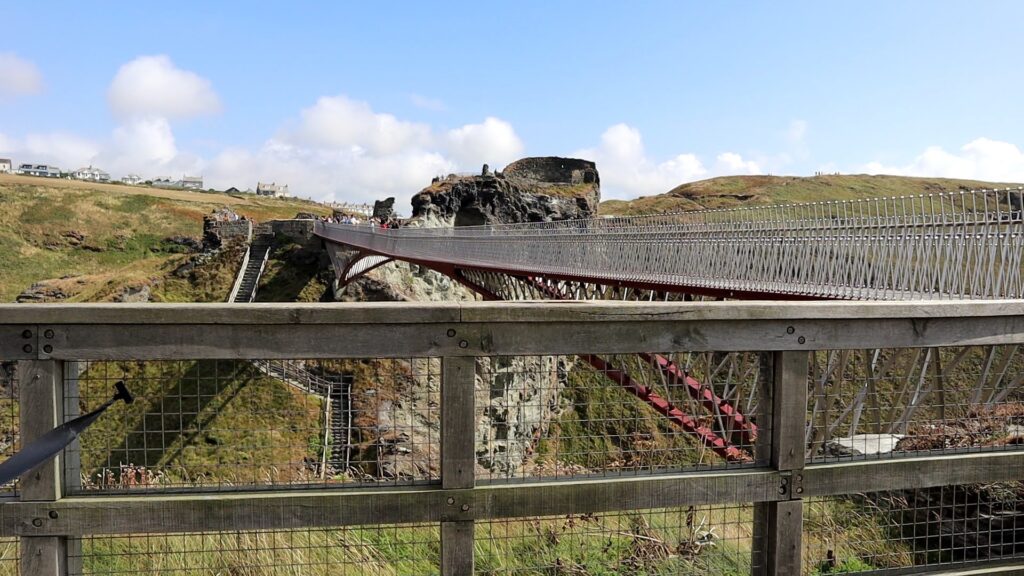
Building Tintagel Castle
Richard, Earl of Cornwall was the second son of King John and younger brother of Henry III, he was a vastly rich aristocrat thanks to the tin mines in Cornwall and the estates he owned in the south of England. It is said that Richard and his brother Henry III had a difficult relationship but Richard remained loyal to him and fought alongside him during the rebellion of the barons and he was made Earl of Cornwall in 1227. Using his immense wealth Richard purchased Bossiney, the land around Tintagel and in around 1233 he built Tintagel Castle.
Tintagel Castle was not built for any military or administrative reasons but as a status symbol. Richard grew up listening to the tales of King Arthur and by owning a castle built on the legendary site of King Arthus’s conception, he felt it made him a more worthy successor to the ancient Cornish Kings
At this time the castle buildings on the mainland and the island were connected by a narrow strip of land called an isthmus. This isthmus was strengthened with stone walls to create a fortified bridge but the isthmus has since collapsed, likely in the late 13th or 14th century
Tintagel Prison
Richard died in 1272 and his son, Edmund inherited Tintagel Castle. In 1300, Edmund also died but had no heir, so his estates passed to the crown. It appears the castle was left to fall into disrepair following this period and by 1337 the roof of the great hall had been removed. The castle did see some rejuvenation when in 1337 Edward III bestowed upon his son, Prince Edward (also known in history as Black Prince) the title of Duke of Cornwall The Prince initiated extensive repairs and in the 1340’s a new two-storey house was built within the walls of the great hall.
Tintagel Castle still had no real administrative or military purpose in order to justify the vast expenses needed to repair it. In the later 14th century it was used as a prison, its most notable inmate was Thomas, Earl of Warwick who was briefly held there in 1397.
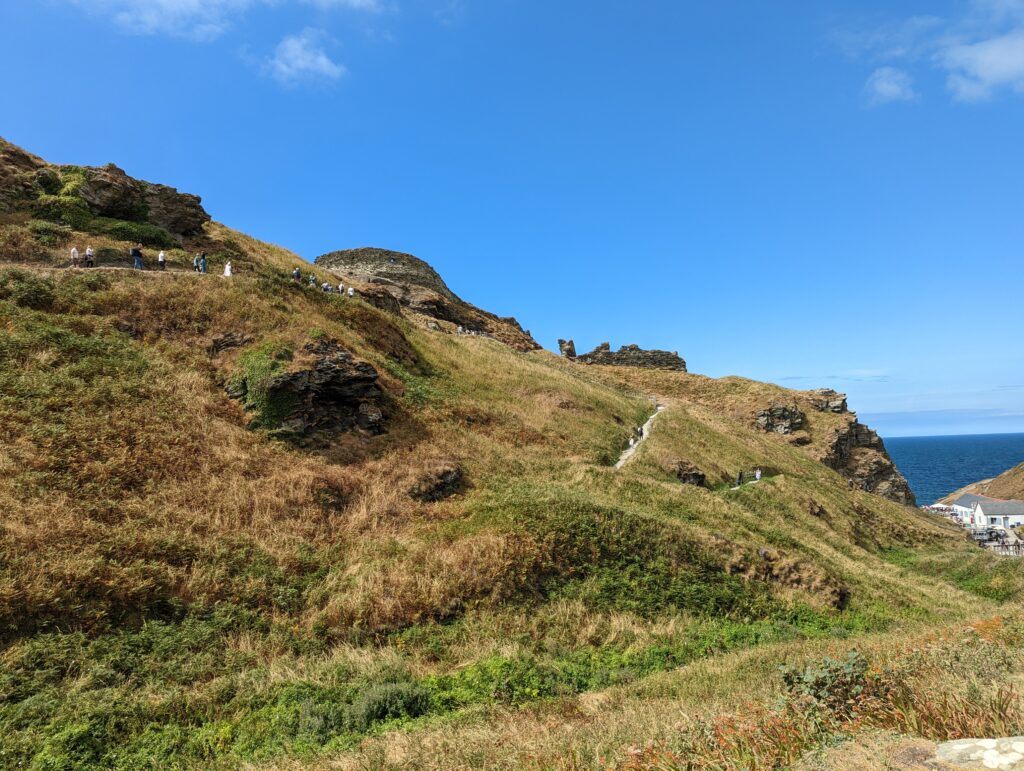
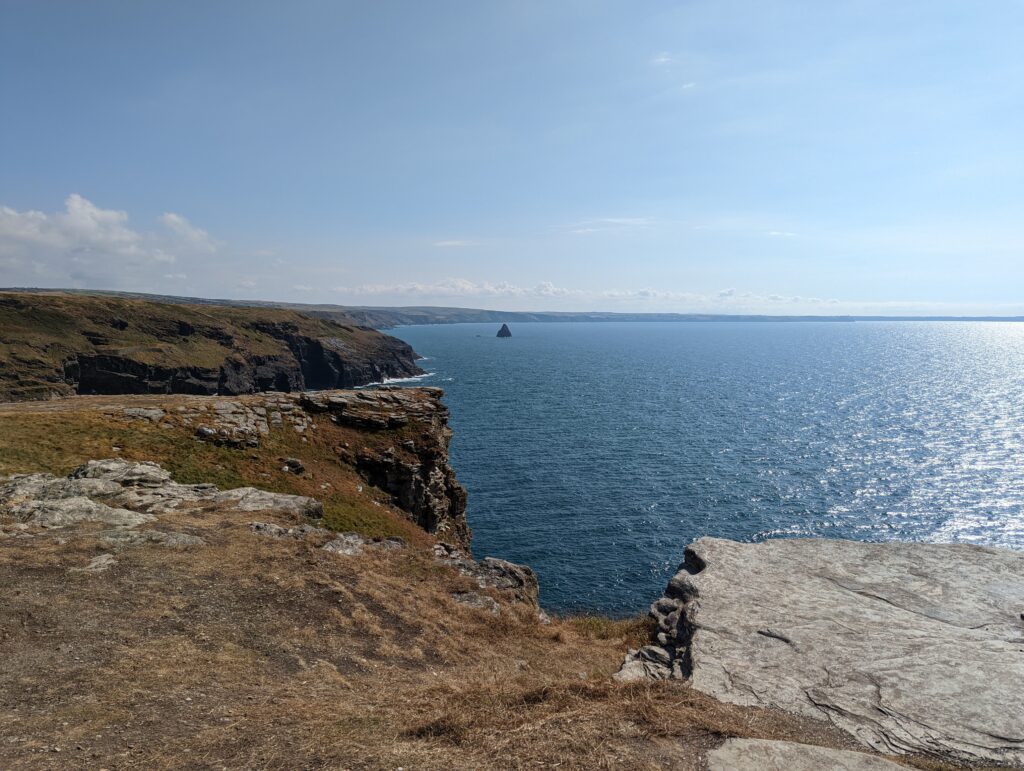
Downfall
With fears of a possible French invasion in 1386, Richard III did briefly refortify the Tintagel Castle but no further repairs were carried out after about 1400. Tintagel Castle was left to fall into ruin over the following centuries with many parts being claimed by the sea following landslides along the cliffs.
In the 17th century the land around Tintagel Castle was intensively mined. In the haven on the east side of the castle is a cave commonly known as Merlin’s Cave where copper was mined.
Tourist Hotspot
In the late 18th and 19th century there was renewed interest in the legend of King Arthur thanks to literary writers such as Malory, Thomas Hardy and Lord Tennyson, as well as artwork from the Pre-Raphaelites which in turn brought interest into Tintagel Castle and transformed it into a very popular tourist destination.
Tintagel Castle is now managed by the English Heritage and in 2019 a new bridge between the mainland and island was built for easier access and to recreate the historic land bridge that once stood in its place.
Postcode PL34 0HE

